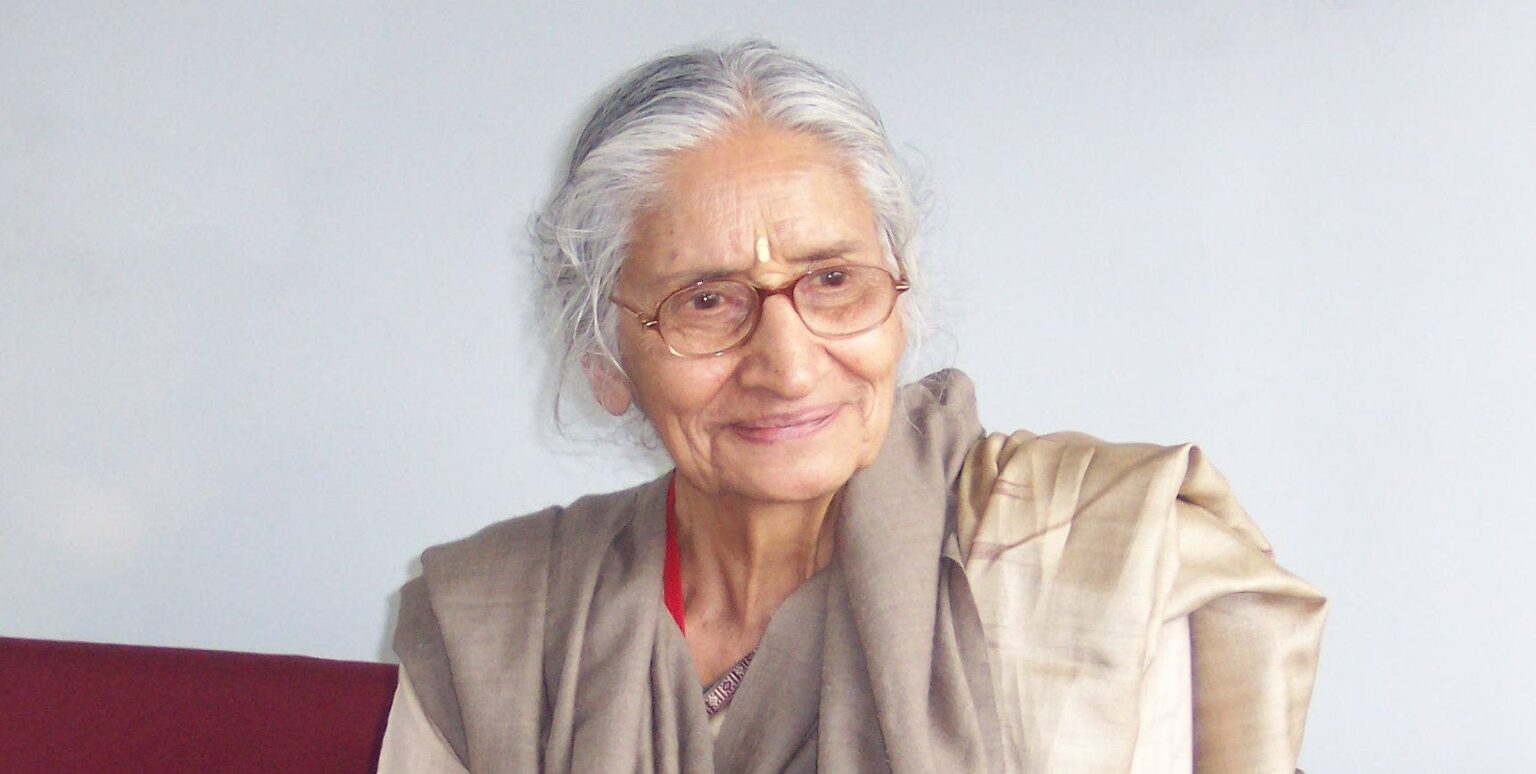For all her image as a cultural tsarina, Kapila Vatsyayan, the feisty researcher earned a cultural vision that stemmed theoretical knowledge and practical experience of the arts
Kapila Vatsyayan’s death last week happened to coincide with the centenary year of top social scientist Jagdish Chandra Kapur. And one cannot but remember the admiration the cultural tsarina had for late Kapur’s views—more so on cosmic humanism.
Five years ago, reminiscing the lofty ideals of Kapur (1920-2010), Kapila Vatsyayan hailed the idea of god’s existence in every object across the universe. This may sound like a slice from Hindu philosophy, but both personalities here were referring to a New Age worldview which is merely half-a-century old and one that emanated from the West.
Thus, contemporary matters do appear with specifics in cosmic humanism. For instance, Dr Vatsyayan is seen particularly impressed with Kapur’s allied exhortation against weapons of mass destruction and the control of the planet’s material wealth with a few capitalist countries.
In that video talk a year after the release of Our Future: A Call for Wisdom as a 2014 compilation of write-ups and lectures by Kapur, Dr Vatsyayan makes a casual-yet-inspired reference to the venue of pertinent events hosted by the social scientist’s Surya Foundation. The self-mention of Surya Kund on Kapur Solar Farms lights up her eyes—strikingly, though momentarily.
Passion for Architecture
That is a giveaway to Kapila Vatsyayan’s keen interest in architecture. The meeting place on ‘The Dialogue for the Human Condition’ is open-air and in a quiet pocket at Kapashera off southwest Delhi. That’s where thinkers addressed three days of sessions which refreshed Kapila Vatsyayan like it did the others under a bright wintry sun in 1986 December. Only that even three decades later, she is in awe about the place as much as the seminars.
“Individuals make institutions. But institutions must outlast individuals,” Dr Vatsyayan goes on to say in that October 2015 TV address to Berlin-based independent think tank Dialogue of Civilizations Research Institute. “Once it continues to be personality-centric, then the institution is finished.”
A very striking observation, coming as it is from one who headed a premier heritage establishment in her country’s capital city for a quarter-century from 1985. That year marked the initial phase of a changed administrative character of India, which had just lost a long-influential Congress party leader as the nation’s prime minister: Indira Gandhi.
Within two years of the launch of the Indira Gandhi National Centre for the Arts (IGNCA), Dr Vatsyayan became the member-secretary of the government-funded arts organisation under the Union Ministry of Culture. Also its founder trustee, she became IGNCA’s academic director in 1993. Later, after a five-year break from 2000 overlapping with the BJP-led Atal Bihari Vajpayee regime (1998-2004), she returned as its chairperson.
The contributions of Kapila Vatsyayan (December 25, 1928-September 16, 2020) to Indian culture can no way be contained to her helming the IGNCA, however big be the establishment that continues to occupy a vast tract of land along Lutyens’ Delhi known for a post-Independent coexistence of tree-lined greenery and political intrigues. True, the institution reinforced her reputation as an efficient administrator. Her disciplinarian conduct sometimes bordered on illiberalism and earned Kapila Vatsyayan a good dose of displeasure from certain circles. Even so, none disputed her scholarship in a vast range of subjects. To many, she was an authority in dance, painting, sculpting and, of course, architecture.
The knowledge Kapila Vatsyayan had in these subjects gifted her with a vision and wisdom. For, hers was not just bookish knowledge, though she was always a voracious reader. A well-respected author, she was prolific too, given that her books totalled one-and-a-half dozen.
Classical Dances
As much as her grip over theories in the arts, Vatsyayan found time to engage herself as a student of an array of classical dances. Notwithstanding north Indian upbringing as a Delhiite with ancestral roots in that part of Punjab which is in Pakistan post the 1947 Partition, her area of interest spread to the arts above the Vindhyas and beyond the Himalayas.
Definitely, she had a special liking for Dravidian culture. That penchant went on to flourish after her learning Tamil Nadu’s Bharatanatyam and even neighbouring Kerala’s classical Kathakali ballet that even today remains primarily a male domain. She did perform the two forms, sporadically. And, not to speak of her regards for Koodiyattam, much before the only surviving Sanskrit theatre won a Unesco recognition by the turn of the 21st century.
Back to Vatsyayan’s bibliography, the printed works are noticeable by their range of subjects as much as their numbers. For instance, Jaur Gita Govinda (1980 reproduces Rajasthani miniature pictures associated with the 12th-century Sanskrit poem alongside texts in mixed Bangari-Mewari dialects of the desert belt. She came out with another work (in 2011) on the same Jayadeva masterpiece, this time from eastern India’s Darbhanga.
In fact, in 2011, she published two other books: one on art in Asia, the other on the continent’s dances. A 1982 work was Dance Sculpture in Sarangapani Temple, delving into the visual nuances of a vintage Vishnu shrine in Kumbakonam along the Cauvery belt down the country. In 1991, she penned Concepts of Space: Ancient and Modern, bridging two epochs. Well into her 80s, her untiring spirit brought out a book in 2013. Plural Cultures and Monolithic Cultures is a pundit’s take on a set of complex issues arising out of a meeting between multiple arts and a monolithic administration.
Even into her nineties, the humanities enthusiast continued to be integral to the cultural circles of Delhi. Whenever she entered an auditorium staging a concert or a hall hosting a seminar, the people at the venue got the vibes. The front row and the middle seat were always for Kapila Vatsyayan.
Write to us at editor@indiaartreview.com

